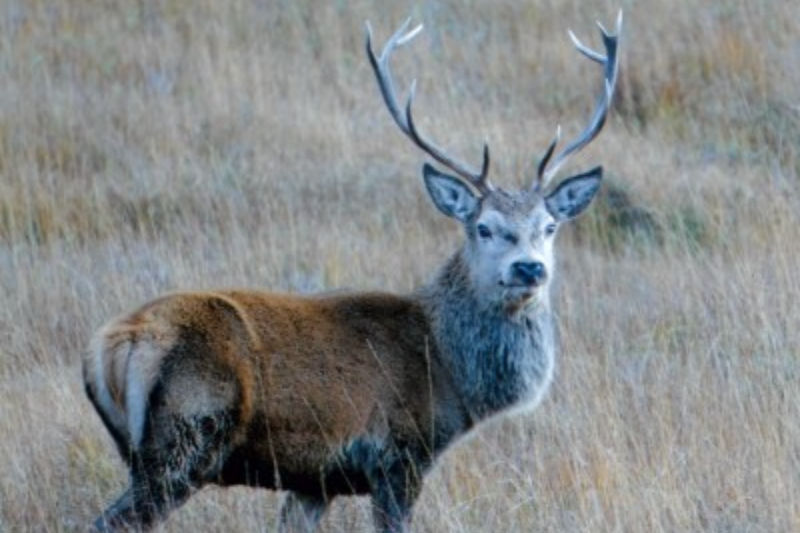Preparing for Autumn: Rural Pests to Watch as the Weather Cools
- T & C's Pest Control Services
- Mar 21
- 3 min read
As summer fades and the first crisp mornings of autumn settle over rural New Zealand, the behaviour of common pests begins to shift. Many rural landowners may believe pest activity slows down in the cooler months—but in fact, autumn is a critical time for pest management.
At T & C's Pest Control Services, we understand how seasonal changes affect pest movement and behaviour. In March, several pest species begin preparing for the colder months ahead. If left unchecked, these pests can cause significant damage to your land, stock, and native ecosystems. The good news is, with early intervention and humane control methods, you can protect your property before problems escalate in winter.
What Pests Are Most Active in Autumn?
Rabbits and Hares
Breeding Slows Down and Feeding Increases - While their breeding slows compared to spring and summer, rabbits and hares remain highly active in autumn. As grass growth slows, they feed more aggressively on pasture, newly sown crops, and native vegetation.
Burrowing and Shelter-Seeking - Rabbits start reinforcing burrows to withstand colder weather, making it harder to detect their presence later on. Hares, though are not burrowers, will also frequent sheltered areas, causing localized overgrazing.
Why Autumn Control Works - Catching rabbit populations before winter breeding resumes in early spring helps prevent large outbreaks. Early control also protects winter forage for stock.

Feral Pigs
Rooting and Ground Disturbance - Feral pigs are particularly destructive in autumn, rooting through soil for bulbs, roots, and worms. This can devastate pasture, disrupt fencing, and damage waterways through erosion.
Increased Movement - As food sources dwindle in forests, pigs move closer to farmland and orchards, causing extensive crop and pasture loss.
Human and Livestock Safety - Feral pigs can be aggressive, especially sows with piglets, posing a risk to livestock and working dogs. Autumn control reduces numbers before harsher conditions push them further onto farmland.

Feral Goats
Mobility Increases - Goats travel in larger groups in autumn as they forage widely for remaining vegetation. They cause severe browsing damage to native bush, forests, and tree plantations.
Erosion and Land Degradation - By stripping hillsides and gullies of vegetation, goats contribute to soil erosion—especially dangerous during autumn rainfall.
Control Timing Matters - Reducing goat numbers now minimizes damage during winter when vegetation is scarce, and recovery is slow.

Feral Deer
Increased Movement and Grazing Pressure - As autumn progresses, feral deer expand their range in search of nutrient-rich pasture and crops to prepare for winter. This can lead to intensified grazing pressure on farmland, especially in areas bordering forests or scrub.
Damage to Fencing and Native Bush - Deer are strong animals that can break or jump fences, allowing them access to paddocks and protected areas. In native bush, they browse seedlings and saplings, preventing forest regeneration and damaging biodiversity.
Winter Preparation - Deer form larger groups in autumn, especially around food sources, making damage more concentrated and visible. Controlling deer numbers in autumn helps reduce overgrazing risks and protects both pasture and native areas before growth slows in winter.

Possums
High Feeding Activity - Possums are voracious feeders in autumn, fattening up before winter. They target fruit trees, vegetable crops, and young forest growth.
Disease Risk – TB Spread - In some regions, possums are vectors for bovine tuberculosis (TB), threatening cattle and deer herds.
Night Activity Peaks - Possums are nocturnal, and their autumn feeding frenzy makes this the ideal time for night-time control operations.

Why Act Now? The Risks of Delayed Pest Control
Delaying pest control in autumn can lead to:
Increased Pest Populations in spring due to breeding cycles.
Greater Land Damage over winter as ground recovers slowly.
Higher Costs of control when infestations are worse.
Stress on Livestock due to competition for food and damaged pasture.
Our Humane Pest Control Approach
We specialize in humane, effective pest management tailored to rural properties. We do not use traps or poisons, ensuring safety for your land, livestock, working dogs, and native wildlife.
Our methods include:
Targeted, humane removal techniques based on pest behavior and land type (using firearms).
Property assessments to identify pest hotspots and risk areas.
Seasonal monitoring to prevent future infestations.
Protect Your Land Before Winter Sets In
Autumn is your window of opportunity to get ahead of pest issues. By acting now, you can:
Safeguard your pasture and crops.
Protect your stock’s food supply.
Minimize environmental degradation.
Prepare your land for a productive winter and spring.
If you’re noticing signs of pests - or want to make sure your property is protected - get in touch with us today. We’ll help you assess your land and create a custom, humane pest control plan that fits your needs.
Contact Us: tandcsnz@gmail.com
Service Areas: Greater Wellington Region and surrounding rural areas
Website: https://www.tandcspestcontrolnz.com/
Let’s work together to keep your property pest-free this autumn—the humane way.

コメント